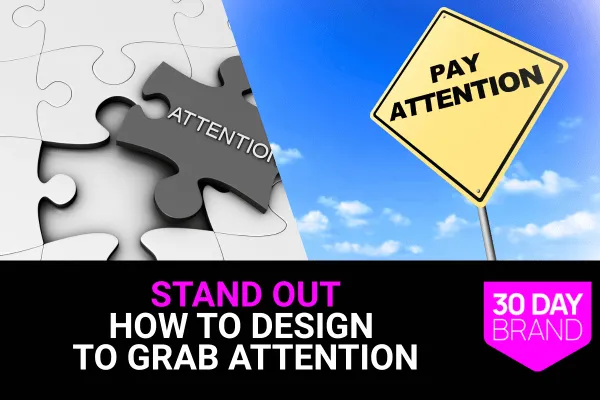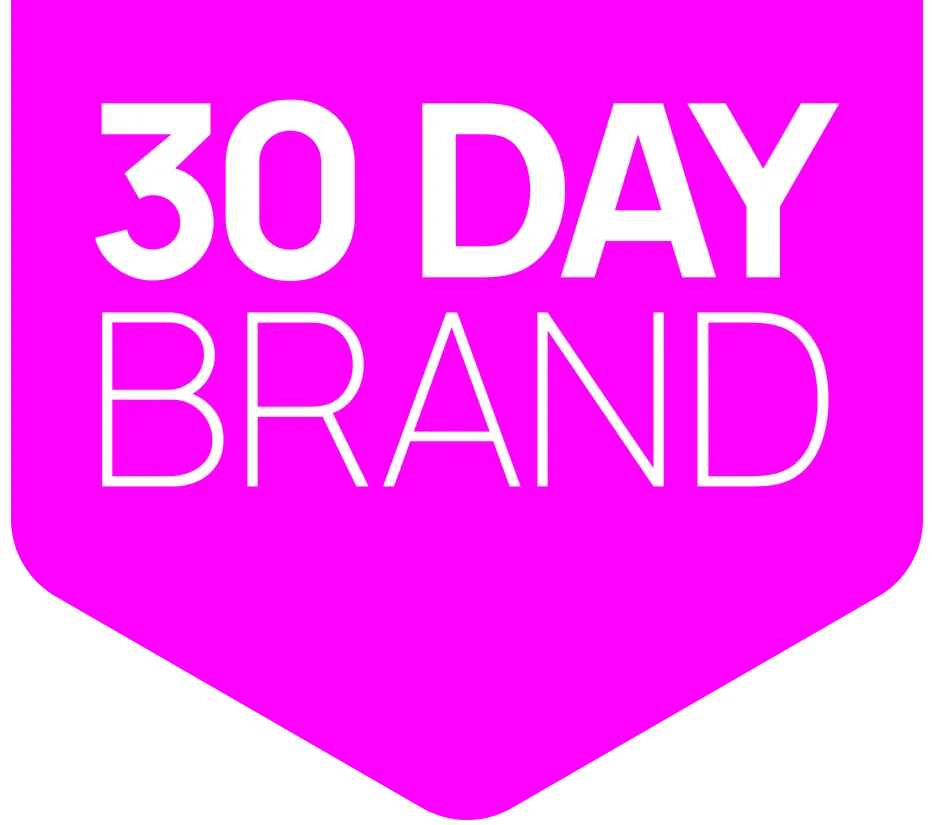
B2B Brand Identity Design: Visual Elements That Build Trust
B2B Brand Identity Design Definition
B2B brand identity design is the visual system that signals credibility at first glance. It includes logo, color, typography, layout, and imagery.
94% of first impressions are design-related and formed in ~50 ms (NN/g, 2023). In B2B, this snap judgment influences price tolerance, sales velocity, and trust.
This matters for founder-led B2B firms that want to stand out, shorten cycles, and command premium fees. Learn foundations in the B2B branding guide.
20 Strategies for B2B Brand Identity Design
Item 1: Trust-First Identity
Definition: Design for credibility before creativity.
How to implement:
Use clean layouts and hierarchy.
Limit fonts and colors.
Prioritize legibility.
Expected result: Higher perceived expertise.
Time required: 1 week.
Item 2: Simplicity Principle (Logo)
Definition: Simple logos scale and stick.
How to implement:
One idea per mark.
Avoid fine detail.
Test at 16 px.
Expected result: Faster recognition.
Time required: 1–2 weeks.
Item 3: Memorability Factors (Logo)
Definition: Shape and type pairings that endure.
How to implement:
Distinct silhouette.
Purposeful symbolism.
Aligned typography.
Expected result: Higher recall.
Time required: 1 week.
Item 4: Versatility Set (Logo)
Definition: Formats for all uses.
How to implement:
Horizontal, vertical, icon, wordmark.
Color, mono, reverse, grayscale.
SVG, PNG, EPS.
Expected result: Consistent application.
Time required: 3 days.
Item 5: Size & Color Stress Tests
Definition: Prove legibility in edge cases.
How to implement:
Test dark and light.
Print small and large.
Check on mobile.
Expected result: Fewer failed placements.
Time required: 2 days.
Item 6: Color Psychology
Definition: Colors that signal trust.
How to implement:
Choose primary for trust (e.g., blues, grays).
Add one accent.
Document HEX/RGB/CMYK/Pantone.
Expected result: 80% stronger recognition (CMI, 2024).
Time required: 2–3 days.
Item 7: Global Color Fit
Definition: Palettes that work worldwide.
How to implement:
Review meanings across cultures.
Avoid risky pairings.
Validate with local teams.
Expected result: Lower brand risk.
Time required: 3 days.
Item 8: Typography System
Definition: Rational type stack.
How to implement:
Primary font for headlines.
Secondary for subheads.
Readable body type.
Expected result: Higher readability.
Time required: 2 days.
Item 9: Digital Readability
Definition: Fonts optimized for screens.
How to implement:
Adequate x-height.
Clear glyph shapes.
Meet WCAG contrast.
Expected result: 84% better comprehension (NN/g, 2023).
Time required: 2 days.
Item 10: Web Font Performance
Definition: Speed without quality loss.
How to implement:
Limit weights.
Preload key fonts.
Define fallbacks.
Expected result: Lower bounce.
Time required: 1 day.
Item 11: Imagery Standards
Definition: Photos and graphics aligned to strategy.
How to implement:
Define subject, lighting, tone.
Ban clichés.
Apply consistent treatments.
Expected result: Higher trust.
Time required: 3 days.
Item 12: Layout & Grid Rules
Definition: Predictable scaffolding.
How to implement:
Set grids, spacing, ratios.
Lock headline sizes.
Standardize buttons.
Expected result: Cleaner UX.
Time required: 2 days.
Item 13: Accessibility by Design
Definition: Inclusive, compliant visuals.
How to implement:
Contrast ≥ 4.5:1.
Define focus states.
Add alt text.
Expected result: Wider reach.
Time required: 2 days.
Item 14: Brand Guidelines
Definition: One source of truth.
How to implement:
Document logo, color, type.
List dos and don’ts.
Maintain file library.
Expected result: 23% revenue lift from consistency (Lucidpress, 2021).
Time required: 1–2 weeks.
Item 15: Digital Touchpoints
Definition: Web, email, social, ads.
How to implement:
Unify headers and CTAs.
Reuse components.
Check mobile first.
Expected result: 67% higher engagement (CMI, 2024).
Time required: 2–3 weeks.
See structure ideas.
Item 16: Sales Materials
Definition: Decks, one-pagers, proposals.
How to implement:
Branded templates.
Outcome-led slides.
Proof near CTAs.
Expected result: 28% higher proposal acceptance (Salesforce, 2024).
Time required: 1–2 weeks.
Item 17: Print & Environment
Definition: Cards, signage, events.
How to implement:
Standard specs and finishes.
Wayfinding rules.
Booth kits.
Expected result: Stronger in-person trust.
Time required: 2–4 weeks.
Item 18: Digital Asset Management
Definition: Controlled file access.
How to implement:
Central library.
Versioning and permissions.
Expire retired assets.
Expected result: 76% less inconsistency (CMI, 2023).
Time required: 3 days.
Item 19: Governance & Training
Definition: Keep teams aligned.
How to implement:
Quarterly refreshers.
Review asset queues.
Name approvers.
Expected result: Cleaner execution.
Time required: Ongoing.
Item 20: Messaging Alignment
Definition: Visuals support words.
How to implement:
Map design to messaging.
Mirror hierarchy in layouts.
Keep tone consistent.
Expected result: Faster comprehension.
Time required: 1 week.
See messaging guide.
Implementation Guide
Step 1: Assess & Brief
What to do: Audit visuals and competitors. Write a brief.
Tools needed: Inventory, interviews.
Time required: 2 weeks.
Expected result: Clear goals and constraints.
Step 2: Design Core System
What to do: Logo, color, type, layout, imagery.
Tools needed: Boards, prototypes.
Time required: 4 weeks.
Expected result: Approved identity kit.
Step 3: Document Guidelines
What to do: Build brand manual.
Tools needed: Templates, usage rules.
Time required: 2 weeks.
Expected result: One source of truth.
Step 4: Roll Out in Waves
What to do: Digital first, then print.
Tools needed: Page and slide masters.
Time required: 8 weeks.
Expected result: Cohesive experience.
Reference: brand identity design guide.
Step 5: Monitor & Improve
What to do: Audit quarterly, track metrics.
Tools needed: Analytics, surveys.
Time required: Ongoing.
Expected result: Continuous gains.
Metrics & Measurement for B2B Identity
94% of first impressions are design-related (NN/g, 2023).
23% revenue lift from brand consistency (Lucidpress, 2021).
18% shorter cycles from professional identity (Forrester, 2024).
Track recall, bounce, deck usage, win rates, and deal size. Review monthly. See branding best practices.
FAQ: B2B Brand Identity Design
Q: How simple should our logo be?
A: One idea, legible at 16 px, clear in mono.
Q: How many brand colors should we use?
A: One primary, one accent, plus neutrals.
Q: Serif or sans serif for B2B?
A: Either. Prioritize readability.
Q: What file formats do we need?
A: SVG, PNG, EPS, in color and mono.
Q: How do we keep teams on-brand?
A: Guidelines, templates, quarterly refreshers.
Q: What do we update first?
A: Website and sales materials.
Q: How do we measure impact?
A: Track win rates, deal size, and cycle speed.
Q: How often should visuals refresh?
A: Minor yearly, system review every 3–4 years.
Q: Can visuals raise price?
A: Yes. Premium identity supports 15–20% premiums (McKinsey, 2023).
Q: Where do visuals meet messaging?
A: Start with the messaging framework.
Let’s Build a Trust-First Identity: Next Steps
Most B2B firms look interchangeable. Visual clarity builds trust and pricing power.
Run the free Brand Message Audit. In three minutes, see how your visuals impact buyer trust.










